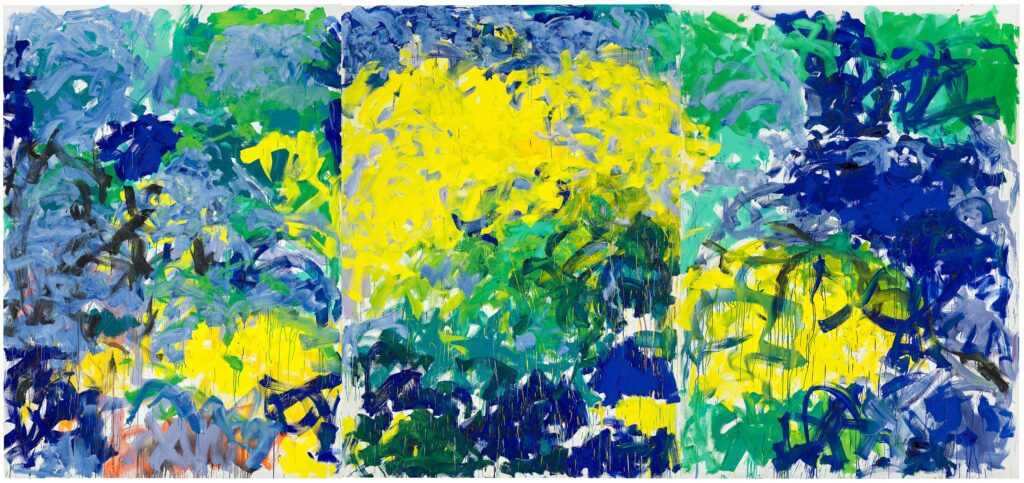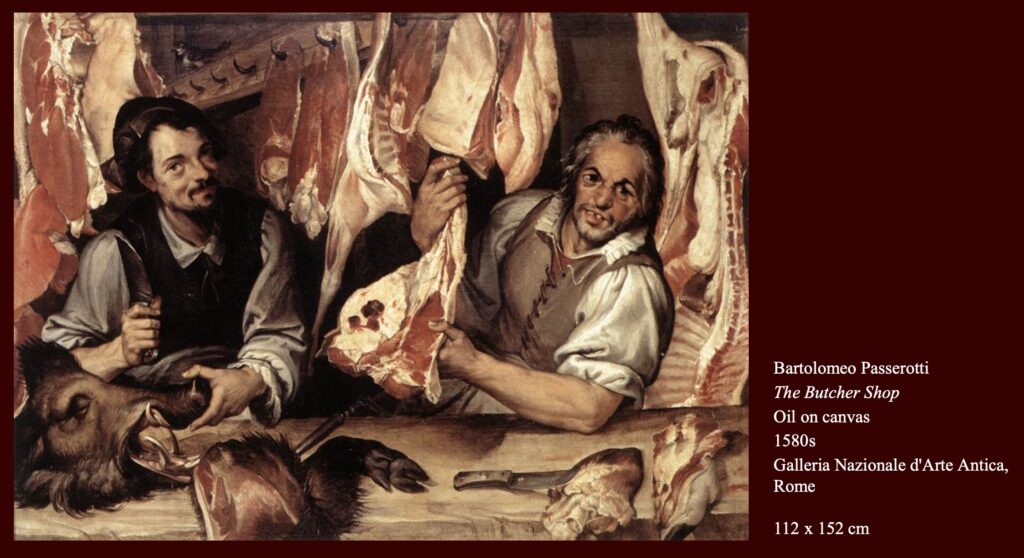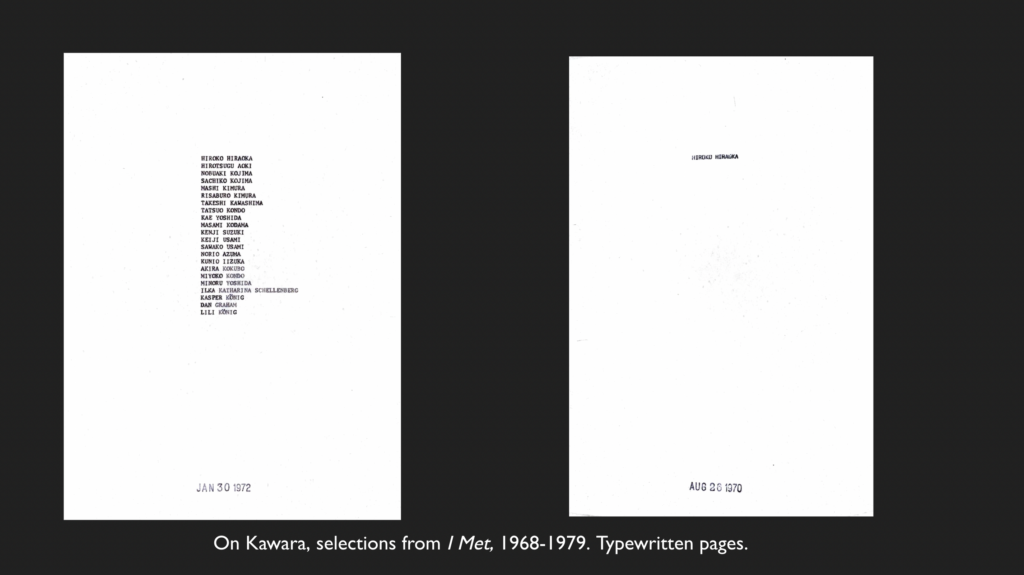Seniors seeking honors in Art History recently participated in the Honors Theses Fall Colloquium. This was an important opportunity for them to share their early project research and receive constructive feedback and guidance from their peers and faculty. Read on to learn about these impressive projects and mark your calendars for the Honors Theses Spring Colloquium – February 28th 2024.
Olivia Andrews
“Cape Verdean Visual Culture: Grappling with the Local and the Global in Post-Colonial Cape Verde”
For the Art History Honors Fall Colloquium, I presented my research on Cape Verdean art after independence, titled “Cape Verdean Visual Culture: Grappling With the Local and the Global in Post-Colonial Cape Verde”. I began the presentation with a brief historical overview of Cape Verde, a country often absent in literature on African history and even occasionally excluded from the map of Africa. I also addressed how through the often anthropological analysis of works deriving from Africa, conversations around art often exclude the creations of African people. I saw this firsthand during my time in Cape Verde, visiting history museums, libraries, and speaking with local people who told me “real art” does not exist in Cape Verde. Rather than fighting against these challenges, I am instead pushing myself to center and interrogate this local ideology that denies the presence of art. With this, I look forward to exploring how artists today are grappling with both colonial and local influences in the creation of an indigenous art culture. I plan to carry this out in my thesis by presenting three case studies. Chapter one will look at the evolution of artisanal crafts like textiles, followed by chapter two which discusses tensions within the painting community on how to represent Cape Verde, and chapter three which explores the art of the diaspora. In the next colloquium, I look forward to expanding my research beyond Cape Verde and tapping more deeply into art across West Africa and Europe which serve as inspiration for Cape Verdean art.

Bailey Chapin: “The Paintings of Joan Mitchell: Poetry, Music, and the Visual Arts”
At the fall colloquium, I presented the progress in my research this semester focused on Joan Mitchell, studying intersections of poetry, music, and the visual arts in her painting. I discussed my primary objects of investigation in Mitchell’s early engagements with poetry, divided in three groups: book projects, “color abstracts” and painted poems. I shifted to a discussion of musical reference in Mitchell’s later work, embodied in her La Grande Vallée (1983-4) series. In her early career, the subject of my first chapter, Mitchell invoked a poetic tradition with European roots, counter to Greenberg and Rosenberg’s coding of Abstract Expressionism as formally “pure” and definitively American. Again, in her later career in Vétheuil, the focus of my second chapter, Mitchell’s continued avowal of her medium charts her difference from Douglas Crimp’s declaration of the “End of Painting” in 1981. Approaching Mitchell’s work through her synthesis of poetry, music, and visual art allows us to think about painting on her own terms: transcendent of temporality, and also, by extension, of labels of nationality, aesthetic trend, and gender. I asked for feedback on the question of Mitchell’s position in the secondary literature, considering how she has been framed as indebted to various male figures with whom her work has been associated. I argue against reading her work as derivative, looking to nineteenth-century aesthetic ideals of the Total Work of Art to substantiate this claim. Analyzing Mitchell within these broader contexts of aesthetic theory is a method which I am continuing to work through and am looking forward to presenting in the next colloquium in February.

Emma Flaherty: “Rejecting Classicism: Jan van Scorel as Artist-Pilgrim”
At the Art History Honors Theses Fall Colloquium 2023, I presented on my thesis which is tentatively titled “Rejecting Classicism: Jan van Scorel as Artist-Pilgrim.” I outlined the life of Jan van Scorel (1495–1562), a North Netherlandish artist and pilgrim to Jerusalem who also traveled extensively in Italy. Existing scholarship on Scorel stresses his important role in bringing the “Italianate” style of the Renaissance to the Netherlands, and seeks to align him with the general framework of his Northern contemporaries who also traveled to Italy. This framework naturally included an assumption that Scorel, like these other artists, was deeply inspired by the works of pagan antiquity in Rome, despite the fact that no supposed works from his Roman period after the antique survive. On the contrary, Scorel’s style in general is characterized by a uniquely strong adherence to religious and biblical themes, and this of course stems from the uniquely conservative papal environment he was working amongst in Rome, under Adrian VI (1459–1523). My current research focuses on the art made after Scorel’s return to his homeland, with the new status of pilgrim, as well as contacts he made during his pilgrimage that sustained themselves upon his return. These are some of the findings I hope to present at the next Colloquium, in addition to findings from my research trip to the Netherlands in December 2023, generously supported by the John T. Paoletti Travel Research Fellowship.

Yijing Lai: “The Bodies of “La Grassa”: Arts and Visual Culture of Food in Early Modern Bologna”
It was truly a wonderful opportunity to share my work-in-progress and to learn more about my peer’s projects, which are all so fascinating and thought-provoking, and I can’t wait to see how everyone’s projects grow and evolve! My thesis aims to examine the art and visual culture of food in early modern Bologna. Focusing on three case studies across time and media––a 15th-century fresco cycle of bread in the Castello di Bentivoglio, Bartolomeo Passerotti’s 16th-century genre paintings, and Giuseppe Maria Mitelli’s 17th-century prints of food-themed board game, my project intends to explore how representations of food have shaped, reflected, and intertwined with the bodies of Bologna la grassa. For the past few months, I’ve been mostly working on my second chapter, which focuses on the genre paintings of Bartolomeo Passerotti. While Passerotti’s genre paintings have been discussed in light of the tradition of pitture ridicule and sexual/alimentary play in the previous scholarship, I intend to read them in conversation with the broader cultural landscape of Bologna at that time, which encompassed the emergence of the popular literature of Giulio Cesare Croce and the experimental knowledge production in the natural sciences, in particular through the collection of Ulisse Aldrovandi and the burgeoning interest in the study of anatomy. I’m interested in exploring how these parallel facets of life collapsed and congealed on the canvas of Bartolomeo Passerotti, which in turn illuminates the crucial role of food as epistemology, of people who worked closely with food as vectors of knowledge production, and the marketplace as a field for the exchange of not only commodities but also of ideas. For the next colloquium, I would like to share more about my first chapter, the farm-to-table bread fresco series in the Castello di Bentivoglio as my research progresses.”

Sabrina Tian: “On Kawara: Reconciling the Artist’s Japanese Past”
The Fall Colloquium was an exciting opportunity to see what my fellow thesis writers have been working on. I loved seeing the breadth of topics covered by everyone. It was also a great chance to synthesize all the ideas I’ve been developing since this summer. For a while, my ideas felt somewhat scattered and I enjoyed the process of bringing things together in one presentation. I appreciated this chance to present my working thesis and receive feedback on it. The questions and comments I have received from other members of the Wesleyan community have offered me so many new pathways to pursue as I continue my research. Tracking down instances of On Kawara’s Japanese past in his mature works has proven to be an enjoyable challenge that has given me the chance to deepen my understanding of trends in 1960s American art as well as Japanese political history. I have enjoyed digging my teeth into Kawara’s series I Met. There is still much work to be done on this series. In particular, I’m hoping to develop a parallel between the repetition of names in the series as a sign of the intimate and the repetition of form in ’60s aesthetics as a way to distance the self from art. I am eager to start investigating other works and developing the vocabulary to discuss Kawara’s choice to distance himself from his Japanese identity. I’m looking forward to sharing my progress with everyone in February!


